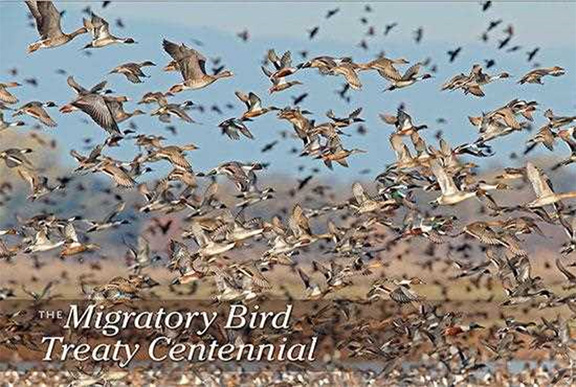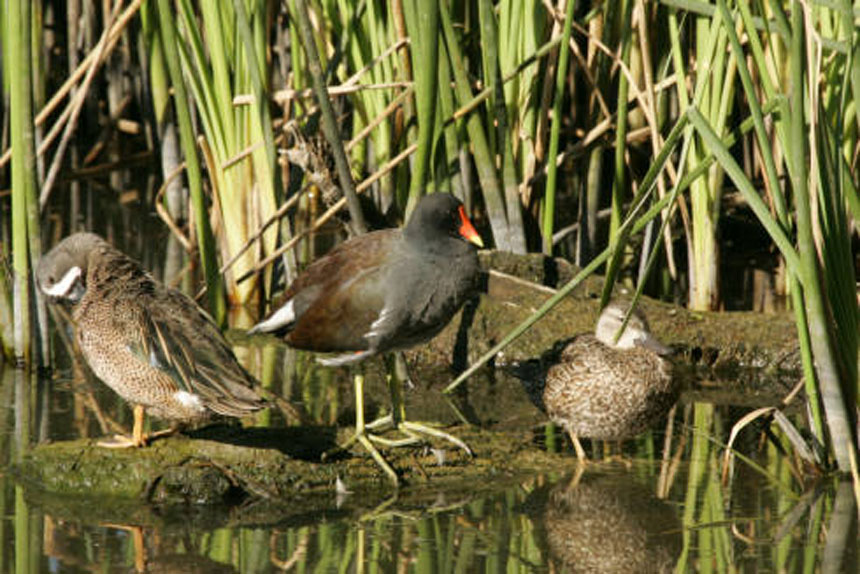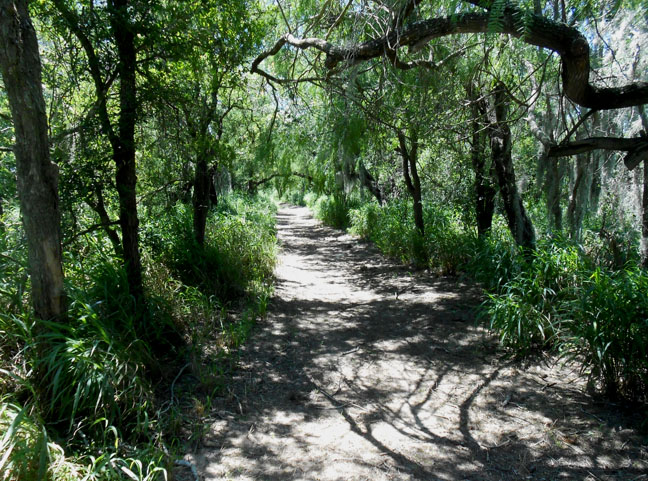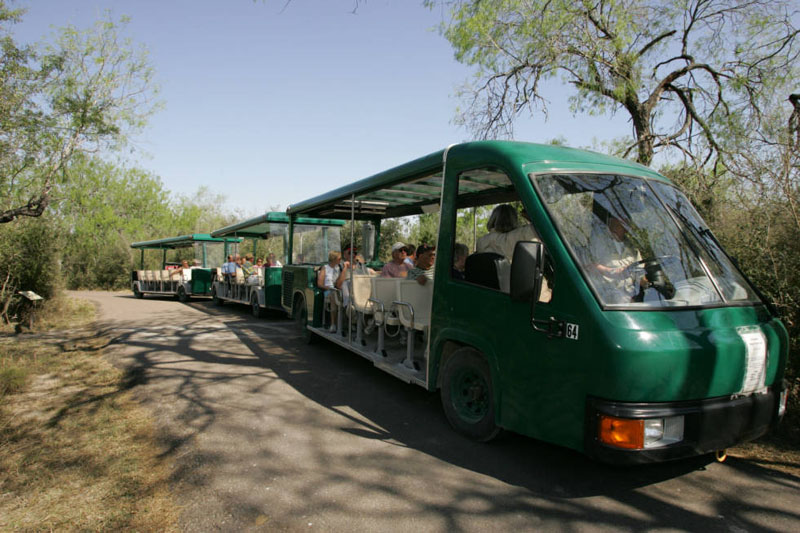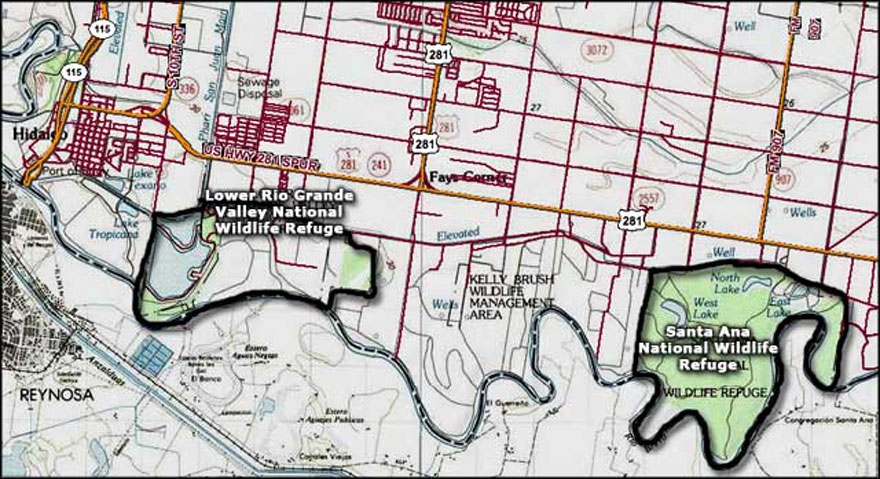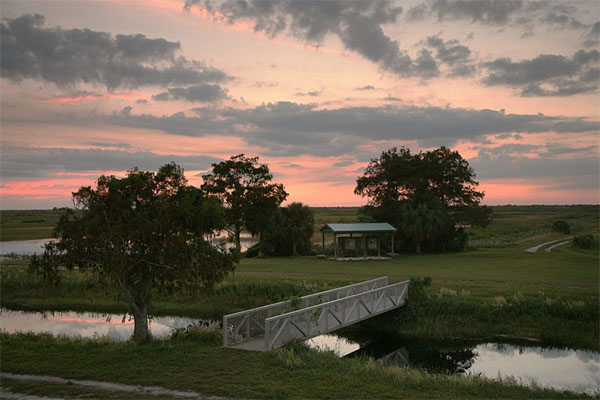2 October 2018
On September 14 and 15, 2018, the Federal Duck Stamp design contest was held in Las Vegas, Nevada, at the unique and appropriate Springs Preserve.
Eligible species for the contest were the Wood Duck, American Wigeon, Northern Pintail, Green-winged Teal and Lesser Scaup. This year, artists were required to include “one or more visual elements that reflect the contributions waterfowl hunters make to habitat conservation.”
The winning artwork was selected from 153 eligible entries. Judges for the contest were: Lowell Baier, attorney and environmental policy adviser; Bob Blohm, retired administrator with the U.S. Fish and Wildlife Service’s Migratory Bird Program; Roberta Laine, art educator; Chris Maynard, artist and avid hunter; and Brett James Smith, wildlife artist who works in multiple media.
A beautiful acrylic painting featuring a drake Wood Duck with a weathered decoy in the background on a still, and somewhat misty, pond was the winning piece. The artist of this fine work is Scot Storm of Freeport, Minnesota. Storm also won the stamp design contest in 2003, with his rendition of a pair of Redheads in flight. It was used in the $15-stamp for 2004-2005.
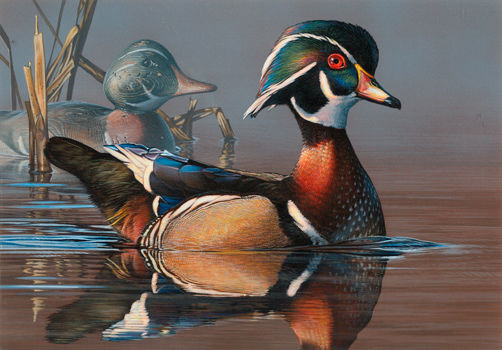
In Storm’s current painting, the waterfowl-hunter element took the form of the duck decoy, a feature chosen by a number of other artist competitors. Other artists included background images of hunters with firearms observing or taking aim at waterfowl, duck blinds, hunting dogs, shotgun shells, boats, duck calls, background refuge signs, and more. There were even a few admirable attempts to portray multi-generational hunters in action. You can see some of these contributions in the second- and third-place pieces, by Frank Mittlestadt of Beaver Dam, Wisconsin, taking second place with his perched male Wood Duck accompanied by hunter with dog collecting decoys, and Greg Alexander of Ashland, Wisconsin, taking third place with his flying Lesser Scaup and hunter-and-dog combination in a boat.
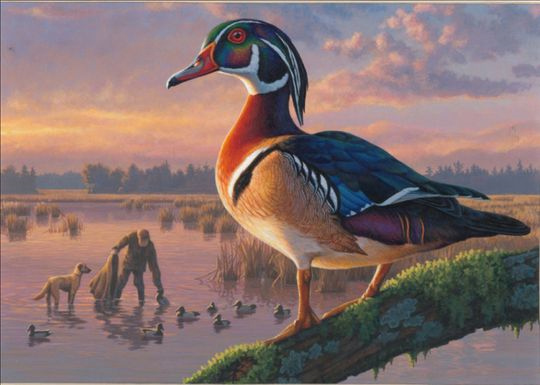
Since 1949, the artwork for the federal duck stamp has been chosen in a such a juried competition, originally in Washington, D.C., but now held at a different location each year. This year, the requirement of hunting heritage caused at least some distress or confusion. A few of the originally submitted entries appeared to ignore the new contest requirement, or “didn’t get the message,” and depicted ducks in settings without the hunting element. They were excluded from the judging.
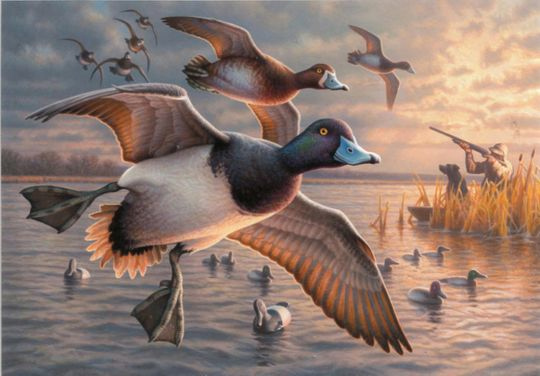
While the three top placement pieces, and other high contenders, were of very high quality, many of the other general submissions seemed to be below par. It’s not only the hunter requirement that may have discouraged entries. In fact, it’s good to remember that there was a creative and very attractive winner a decade ago, in 2008, one which did combine a wonderful decoy, a Long-tailed Duck with accompanying decoy by Joshua Spies of Watertown, South Dakota. While some pundits also pointed to the absence of the three Hautman brothers – Joe, Jim, and Bob – in this year’s contest (each excluded from competition for three years because they won the last three consecutive contests), this doesn’t come close to answering the question of why there were not more quality entries.
>While the new requirement didn’t boost the number of entries, it didn’t really lower the number much. Indeed, the entries have been basically static over the previous five years, averaging 182 entries. (This is in contrast to, say, the 1990s when the average year’s entries were just over 473.)
We at the Friends of the Migratory Bird/Duck Stamp have felt that there is nothing wrong in requiring art rule changes to draw attention to the importance of the stamp, but at the start of the hunter heritage suggestion last year, we doubted that this specific proposal, viewed alone, would serve to “grow” the stamp, producing greater appreciation and increasing sales. It certainly didn’t grow the number of entries, let alone the general quality of the majority of entries.
Still, we felt that the hunting heritage entry, if made within the context of a larger, meaningful plan to expand appreciation and sales, could be very good. But this idea, proposed alone and dropped into the rules, has represented a missed opportunity. Therefore, we originally suggested not rejecting the idea at all, but rethinking it and using it as a positive start. Our group proposed of at least five potential suggestions worthy of discussion that would emphasize the conservation issues confronting the Migratory Bird Hunting and Conservation Stamp, the revised name of the stamp since 1977. Such ideas might include in future stamps:
1. A requirement for one year with background showing vital habitat (no close portraits whatsoever). Reasoning: this could emphasize the importance of wetland and/or grassland habitats to the particular species portrayed.
2. A requirement showing only female ducks at nests or with young. Reasoning: this could emphasize the essential role of the more cryptic females in incubating/raising the young ducks (not necessarily geese, swans, and whistling-ducks, where both males and females play essential roles). Note: Young have only appeared four times, in 1941, 1960, 1961, and 1976; and never has a nest been illustrated. The inclusion of females is also important since the artists historically have tended to focus on painting the more “attractive” males of the species.
3. Restricting the choices for one or more years to the generally sea-bound species of the seaducks. This would focus on the three scoters, four eiders, long-tailed duck, and harlequin duck. Reasoning: These species are among the most at-risk species at one or another level, and more conservation attention should be directed to them. In addition, the three scoters – black, white-winged-and surf – have only appeared once each in entire history of the stamp!
4. A requirement showing food as an added feature in the image. While this may be difficult, perhaps showing the waterfowl – multiple birds? – dabbling, dipping, and upending or perhaps consuming some vegetable or animal matter as food, it would be highly instructive. (Curiously, the stamp has never shown a dabbling/puddle duck tipping up in the background!) This new requirement might be not unlike suggestion #1, the habitat requirement, but more artistically demanding. Reasoning for inclusion: habitat without food is simply meaningless.
5. The requirement of the inclusion of a migratory non-waterfowl in the background, a suggestion we made in 2015. There is some time for this idea; it might be best in for the 2020-2021 stamp, celebrating the centennial of the Supreme Court decision upholding the Migratory Bird Treaty Act (MBTA) in 1920. Reasoning: Showing a secondary bird species would emphasize that other migratory birds, beyond waterfowl, are important beneficiaries of the conservation effort driven by the waterfowl-dominated stamp.
These five suggestions all contain important on-the-ground conservation lessons, potentially combining an artistic challenge with a serious environmental message.
These five ideas are among those that could still be considered in a longer-range plan for artwork and the stamp, all stressing the conservation functions of the stamp. There are two other creative suggestions that could enter the mix, although neither has an intrinsic conservation/biological message:
1. The recent suggestion on the “waterfowl hunting heritage” might give the hunters and the hunting culture a well-earned position on the stamp itself. This could also be expanded to include all the users covered under the “big six” wildlife-dependent public uses (hunting, fishing, wildlife-watching, wildlife photography, environmental education, and interpretation) covered under the National Wildlife Refuge System Improvement Act of 1997.
2. The inclusion of an “old-style black-and-white” version of the stamp for one year, a version which would highlight the wonderful history of the stamp and the role of collectors.
These ideas – seven in total – suggest an approach to the stamp in a new way for multiple years. But none of these should be presented in the absence of an overall plan. It is vital that multiple stakeholders be tapped for their ideas (e.g., artists, waterfowl hunters, wetland conservationists, collectors, Friends, state wildlife agencies, and the birders and wildlife photographers who increasingly visit the NWRs that are the beneficiaries of stamp dollars).
The potential risk – such as a continuing decline in the number of art entries – would have to be identified and addressed. The ultimate goal would be educational and institutional – to grow the appreciation and, ultimately, the sales of the stamp.
